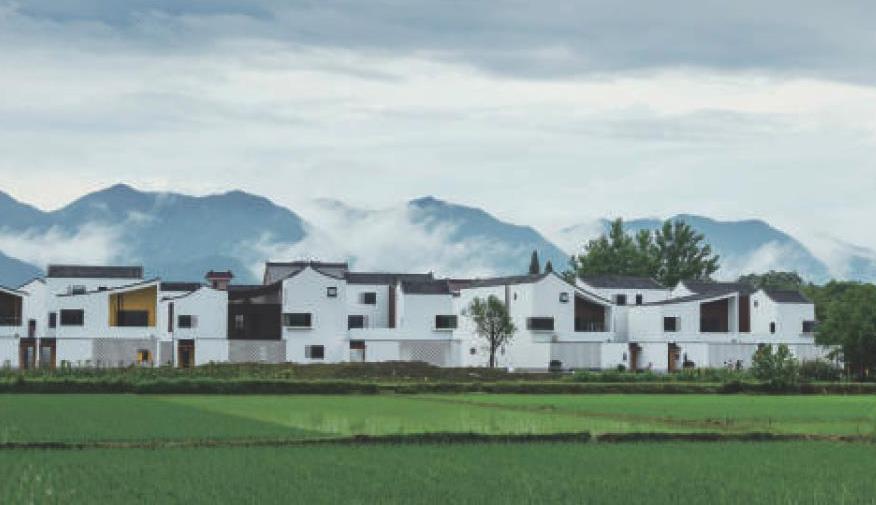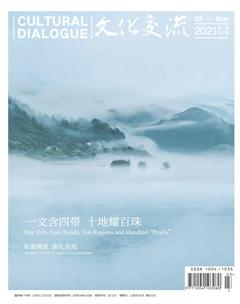钱塘江诗路:锦峰绣岭 山水之乡


钱塘江是杭州的母亲河,是杭州城市发展的重要轴带,钱塘江展现吴越山水的独特魅力,形成一条独具韵味的文化之路。一直以来,钱塘江是文人墨客的钟情之地,留下了无数脍炙人口的诗文华章。传统文化是一座城市的灵魂,也是社会经济高速发展的“加速器”和“助推器”
钱塘江唐诗之路是一条充满诗情画意的水上画廊,历来被称为“锦峰绣岭,山水之乡”。唐代,浙西山水成为唐朝100多名诗人“壮游吴越”的必经之地,留下了500多篇传颂千古的诗篇。“钱塘江唐诗之路”与国家级风景名胜区“富春江—新安江(千岛湖)”,成为沿线富阳、桐庐、建德、淳安四区(县、市)宝贵的文化遗产。这条路线以古人的诗歌创作为线索,兼备文献、文学与地理学价值,既具文学审美性,又蕴藏深刻的文化内涵。
全流域充盈诗韵
钱塘江,古称浙,全名“浙江”,又名“折江”、“之江”、“罗刹江”,因塘县(今杭州)而得名,是吴越文化的主要发源地之一,是浙江省的母亲河。钱塘江源远流长,其诗路绵长共分三大流域。
新安江流域——建德、桐庐境内的严州,位于钱塘江上游山区,锦峰绣岭,山高水长,是钱塘江唐诗之路上的重镇,她的美丽山水催生出了中国绝好的山水诗、绝佳的山水文章和绝美的山水画。让诗路不仅兴盛在纸笔间,更兴旺在实景中。严州是山水诗的故乡。中国山水诗的开创性人物谢灵运的许多名作写的就是严州风光。
宋武帝永初三年(422),三十八岁的谢灵运出任永嘉太守,取道钱塘江溯流而上,经富春江、新安江,转道兰江前往永嘉,旅途中写下了《富春渚》《七里濑》等诗篇,“江山共开旷,云日相照媚。”(《初往新安至桐庐口》)“石浅水潺湲,日落山照曜。”(《七里濑》),就是其中脍炙人口的名句,传诵古今。
另有沈约《新安江至清浅深见底贻京邑游好》“洞彻随清浅,皎镜无冬春”、孟浩然《宿建德江》“野旷天低树,江清月近人”、刘长卿《送杜越江佐觐省往新安江》“清流数千丈,底下看白石”、郎士元《送奚贾归吴》“水清迎过客,霜叶落行舟”……可以说,历代旅居于新安江畔的诗人们都对新安江之水颇为偏爱,他们钟情于江水之“清”,并倾力描绘。新安江之水在他们笔下被赋予了清澈、纯粹、澄明的内涵。他们对江水之清的书写,不仅是客观的描摹,也是对自身心志的写照,希冀自身在繁杂的俗世中坚守本心的清澈。
到了唐代,人们对山水美学有了更深刻的认识,自然山水既是描写的对象,又是诗人感情的载体,山水诗成为诗人抒发感情的一种艺术形式,涌现出了许多佳作,形成了著名的山水诗流派,李白、杜甫、王维、孟浩然等大诗人为代表作家。在唐代的山水诗中,孟浩然的《宿建德江》一诗堪称绝作:移舟泊烟渚,日暮客愁新。野旷天低树,江清月近人。
而在富春江流域,虽有如任昉《严陵濑》一类写景诗,但多数以怀古为主题,钦慕严子陵的高风亮节。如谢灵运《七里濑》“目睹严子濑,想属任公钓”、许浑《晚泊七里滩》“荣华暂时事,谁识子陵心”、梅尧臣《咏严子陵》“终为蕴石玉,敻古辉岩陬”、王维《送李判官赴东江》“树色分扬子,潮声满富春”、孟郊《送无怀道士游富春山水》“山浓翠滴洒,水折珠摧残”、吴融《富春》“长川不是春来绿,千峰倒影落其间”……这些诗歌或赞严子陵风骨,或陈归隐之心,将富春山水写得生动秀丽、青翠可爱。
桐君山因药祖桐君闻名,所存诗作甚夥。如苏辙“多病未须寻药录,从今学取衲僧闲”,卢琦“碧桐花下觅神仙,白日山中遇樵牧”,黄淳耀“花开游子路,云泊野僧关”。桐君山在诗人们笔下俨然方外之地,被赋予仙人之气,飘逸出尘。
钱塘江流域名人荟萃,有着深厚的文化积淀。钱塘江流域涌现出科学家王充、文学家王国维、历史人物孙权、陈硕真、当代画家叶浅予、作家郁达夫、革命文艺家夏衍等。画家黄公望的富春山居图,尽显钱塘江山水的魅力。历代无数名人游历钱塘江山水,留下了脍炙人口的诗文。
如徐凝《观浙江涛》“浙江悠悠海西绿,惊涛日夜两翻覆”、刘禹锡《送元简上人适越》“浙江涛惊狮子吼,稽岭峰疑灵鹫飞”、罗隐《钱塘江邊》“怒声汹汹势悠悠,罗刹江边地欲浮”……这些诗歌着意于钱塘江的壮美,极尽笔墨,写其豪迈气势。六和塔则集塔与潮为一体,如朱继芳《六和塔》“孤尖标白浪,层级上青天”、陈邦瞻《秋日登六和塔》“飞塔崚层耸碧空,七盘长压海涛雄”、朱崧《登六和塔观潮》“卷地北风起,天边涌雪涛”……这些诗歌中,登塔与观潮往往伴随而生,观潮是登塔后的水到渠成。诗人们取诸怀抱,被塔与潮的万千气象所感染,并由此提升了诗歌创作的境界。
多样的诗歌审美
钱塘江诗路沿线诗歌,既可以用白描手法,直观呈现江河山川情貌,引人无限遐想;又可以巧用诸多修辞,以绚烂的笔墨,形象描绘山水风神,通过文字给人以视觉冲击。前者如白居易《咏潮》“早潮才落晚潮来,一月周流六十回”、焦循《渡钱塘江望六和塔》“晓来江上看西岸,一塔独红山树青”、屠应埈《桐江辞送沈子春尹桐庐》“桐君山在白云边,海雾初开江日寒”等,以朴笔客观描绘山川,晓畅清晰。
后者如李白《横江词》“浙江八月何如此,涛似连山喷雪来”、吴融《富春》“水送山迎入富春,一川如画晚晴新”、杨万里《新安江水自绩溪发源》“泉从山骨无泥气,玉漱花汀作珮声”等,以比喻、拟人、夸张等修辞,或清辞丽澡,或浓墨重彩,以诗人自身的感受相点缀,将山川风物写得生动有趣。
诗人们游历于钱塘江沿线,沿途山川不仅激发了诗情,也为其带来生命的狂想,这集中体现于时间的碰撞与空间的扩张。在时间维度上,诗人们与古今往来的人物、故事对话。如胡曾《姑苏台》“不觉钱塘江上月,一宵西送越兵来”、范钦《六和塔》“山围吴子国,江落伍胥潮”、陈苌《醉书桐君山寺壁》“常笑羊公同湛辈,敢羞哙等伍韩生”等,不经意间,以有意味的意象人事怅望千秋,论学古今,强化了诗歌的表现力。在空间维度上,常以对比的方式,拉伸扩张,方位之间,视角多变。如张翥《登六和塔》“日生沧海横流外,人立青冥最上层”、陈邦瞻《秋日登六和塔》“凤凰台北休回首,禾黍千秋是故宫”、杨时《过七里滩》“拂云高雁倚风抟,下视平湖万里宽”、黄淳耀《登钓台》“雨流岩下钓,星动泽中天”等,或一南一北,或一在江河,一在青天,而人立于四方中,仰观俯察,与宇宙相感知,肆意汪洋,蓬勃潇洒。
钱塘江诗路上的诗歌創作,无论是以我观物还是以物观物,无论是源于现实还是骋乎想象,几乎都做到了情、景、意的融合。如沈约《早发定山》,以“夙龄爱远壑,晚莅见奇山”开篇,表明对山水的痴爱之情。其后数韵,描绘定山之美,以“标峰彩虹”“置岭白云”“倾壁斜竖”“绝顶孤圆”写定山情状与气象。后以“归海流漫漫,出浦水溅溅。野棠开未落,山樱发欲然”接续,江河之浩大、草木之自然,与定山之瑰丽奇伟交相辉映。由此转入芳草寄意,以“眷言采三秀,徘徊望九仙”结尾,表明自身虽沉浮于宦海,却系心于杜兰的归隐之意。全诗色彩浓郁,画面舒展,立意超拔,自然圆融。又如白居易《宿桐庐馆同崔存度醉后作》:“江海漂漂共旅游,一尊相劝散穷愁。夜深醒后愁还在,雨滴梧桐山馆秋。”寥寥数语,以直白之笔,写旅居秋景、延绵愁思,诗尽而意无穷。再如刘长卿《余浦桥月下重游》,秋风飒飒,黄叶离别,青山朝暮,以带有萧条伤秋的实景与意象相叠加,离愁郁结,而末句“明日行人已远,空余泪滴回潮”则将情感渗透于文字间,又将郁结的情感通过“泪滴回潮”疏导排遣,别致而有韵味。这些诗歌,以情驱动,以景主导,以意点睛,三者联动,在不断地调和中臻于圆融。
深刻的文化内涵
钱塘江诗路,不仅是旅游之路、诗歌之路,也是文化之路、精神之路。它在厚重的历史积淀中,蕴藏着深邃的文化内涵。
钱塘江诗路体现的文化气质,既有“山花含雨湿”的温婉柔美,又有“铁马拥万铠”的刚烈霸气。一方面,钱塘江诗路上的山水,因江南特有的地理环境而显得温柔婉约。他们或清新隽秀,或梦幻旖旎。是苏轼笔下的“水天清,影湛波平。鱼翻藻鉴,鹭点烟汀”(《行香子·过七里濑》),也是汪筠笔下的“今夜梅花城下宿,满船香雾梦回疏”(《泊严州》)。另一方面,历史积淀的人物与古事,又为山水注入刚烈之气。如新安江千岛湖有海公祠,为清廉敢谏的海瑞而建。富春江小三峡有子胥渡,因刚烈肝胆的伍子胥而得名。钱塘江畔有六和塔,在吴越王钱弘俶的主持下,为镇伏江潮而建,如将军一般镇守江畔。这种刚与柔的交融,历史与自然的交错,让钱塘江诗路拥有了无限的张力。
钱塘江诗路上的奇山异水,可以是理想的起点,也可以是理想的终点。有志之士于此出仕,怀抱天下;高蹈之人于此归隐,逍遥人生。朱彝尊《富春道中》曰:“霸业孙郎,高风严子,毕竟论谁胜。”孙氏父子与严子陵,是这二者的典型代表。陆游《泛富春江》:“双橹揺江叠鼓催,伯符故国喜重来。”孙坚、孙策、孙权父子三人起于富春龙门,开创霸业,于乱世中庇佑一方安宁,留下无数故事。张伯玉《钓台》:“先生有意羲皇外,不为林泉傲帝居。”严子陵与光武帝间的情谊让人羡慕,其本人外得明君,内修大义,不慕荣利,山高水长,遗泽后世。仕与隐,在这片山水中相协奏,为钱塘江诗路平添几许传奇色彩,增强了诗路的魅力。
钱塘江诗路最感心动耳处,便在于潜藏着的英雄主义情怀。无论是本土之人还是旅居之人,总不乏心系家国、为民生谋福祉的英雄。传说吴越王钱镠感于江潮决堤之患,行射潮之事,与“十万军声半夜潮”的钱江潮水相搏击。传说虽不可考,却足以说明钱镠本人的英雄气概。谢翱于严陵钓台哭祭文天祥,为之作招魂歌:“魂朝往兮何极,暮来归兮关水黑,化为朱鸟兮,有咮焉食。”其本人晚年仍在江浙一带组织“汐舍”“月吟诗社”,书写爱国诗篇。徐夜赞其“生为信国流离客,死结严陵寂寞邻”。生于富春江畔的郁达夫执着抗日,大义凛然,却在苏门答腊岛惨遭日军杀害。其兄郁华亦被敌伪杀害于上海,其母也因不吃日军食物饿死洞中,一门忠烈。郁达夫在《离乱杂诗》中慷慨陈说生平志向:“一死何难仇未复,百身可赎我奚辞。会当立马扶桑顶,扫穴犁庭再誓师。”“天意似将颁大任,微躯何厌忍饥寒。长歌正气重来读,我比前贤路已宽。”这种凛凛人如在的天地英雄气横亘古今,壮大了钱塘江诗路的格局。
(本文参考了林家骊《钱塘江诗路文化述论》,深表感谢。)
The Qiantang River Poetry Road: Home to Charming Mountains and Rivers\
As the mother river of Hangzhou and an important axis for the citys development, the Qiantang River presents unique charms of the Wuyue landscape along a characteristic cultural road. Since ancient times it has been a favorite place for Chinese literati.
In fact, the Tang Poetry Road along the Qiantang River is such a “poetic and picturesque gallery” that it has long been regarded as “home to charming mountains and rivers”. Indeed, during the Tang dynasty (618-907), the mountains and rivers in western Zhejiang became must-visit places for over 100 poets on their “grand tour of Wuyue”, and more than 500 poems were composed.
The name of the Qiantang River derived from Tang county (now Hangzhou), which is one of the most important birthplaces of Wuyue Culture. As the mother river of not only Hangzhou, but the whole Zhejiang province, the Qiantang River can be divided into three parts as far as poetry is concerned.
First, the Xinan River Basin, encompassing one of the most important places in Tang poetry: Yanzhou, which is located in present-day Jiande and Tonglu cities, along ??the upper reaches of the Qiantang River, and is endowed with beautiful high mountains and long rivers. Its beautiful landscape has given birth to Chinas landscape poems, landscape essays and landscape paintings. Many masterpieces by Xie Lingyun (385-433), the pioneer of Chinese landscape poetry, are about its scenery.
In 422, 38-year-old Xie Lingyun became the prefect of Yongjia. He took a boat there up the Qiantang River past the Fuchun River and Xinan River, and then turned to the Lanjiang River. On the trip, he wrote poems entitled “By the Fuchun River” and “Qililai”, with famous lines passed down from ancient times and recited even now:“among shallow stones water is gurgling, with the sunset illuminating the mountains.”
Fast forward to the Tang dynasty, when people had a deeper understanding of landscape aesthetics. Nature/landscape was not only the object of description. Landscape poems became an art form in which poets expressed their feelings. Many excellent poems emerged. Meng Haorans “Staying on the Jiande River for the Night” is one of the best known: “Mooring my boat to the misty bank, I begin to feel sad at dusk. In the wilderness the sky is touching the tree; in the clear river the moon is close to me.”
Second, the Fuchun River Basin. Although poets lavished praise on the scenery of this area, the majority took nostalgia and Yan Zilings moral integrity as their themes. Yan Guang (39 BC-41 AD, courtesy name Ziling) is a renowned hermit who lived in the final years of the Western Han dynasty (206 BC-25 AD) and early Eastern Han dynasty (26 AD-220 AD). He declined the invitation from Emperor Guangwu of Han (5 BC-57 AD), who also happened to be one of his best friends, to become a senior official and instead retreated to the Fuchun Mountains. Yans refusal to pursue money and power, despite the good chances offered him, has been later widely admired by Chinese literati.
Third, the Qiantang River Basin, where quite a number of celebrities and literary works were born, including the Han scientist Wang Chong (27-97), historian and poet Wang Guowei (1877-1927), Sun Quan (182-252), founder of the state of Eastern Wu during the Three Kingdoms period, as well as literary writer Yu Dafu (1896-1945), among many others. In fact, Dwelling in the Fuchun Mountains, one of the greatest Chinese paintings by Huang Gongwang (1269-1354), depicts precisely the enchanting landscape along the Qiantang River. Over generations, countless famous personalities have travelled along the river, leaving a trail of popular poems and essays.
However, the Qiantang River Poetry Road is not only a road of tourism and a road of poetry, but also a road of culture and a road of heroism.
The cultural temperament embodied in the Qiantang River Poetry Road includes not only the effeminate beauty of “mountain flowers with rainy dampness”, but also the masculine and virile strength of “iron-clad horses supported by ten thousand armors”. On the one hand, the landscape on this road is gentle and graceful thanks to the unique geographical environment of the Jiangnan area (south of the Yangtze River). The poems are fresh and beautiful, dreamy and charming:“Tonight I stay in the city of plum flowers, dreaming in a boat full of fragrant mist”. On the other hand, historical figures and events have steeled the landscape. For example, there is the Hai Rui Temple in the Thousand Island Lake, built in memory of Hai Rui (1514-1587) who dared to criticize the emperor. There is the Liuhe Pagoda on the bank of the Qiantang River. Under the auspices of Qian Hongchu (929-988), King of Wuyue Kingdom (907-978), it was built to suppress the rivers damaging tidal bore, like a general guarding the bank of the river. The blend of hardness and softness and the interlacing of history and nature make the stories of the Qiantang River Poetry Road so compelling.
The unique landscape along the Qiantang River Poetry Road can be an ideal starting point or an ideal ending point: people with high ambitions go out from here to embrace the world; people with noble ideals come to the place as well to become hermits and live a happy and unconstrained life. The trio of Sun Quan and his father Sun Jian (155-191) and brother Sun Ce (175-200) is considered a typical case of the former. They started out in the present-day Longmen Ancient Town in Hangzhou and gradually established a formidable kingdom. In contrast, the story of Yan Ziling, the Han dynasty hermit who chose mountains and rivers over privileges and riches and the very embodiment of moral integrity, is often cited as a prime example of the latter. Indeed, instead of clashing with each other, here, the pursuit of an official career in the government and living as a recluse seem to work in perfect concert, lending a touch of romanticism to the Qiantang River Poetry Road.
The most touching part of the Qiantang River Poetry Road lies perhaps in the hidden heroism. Be it locals who were born and raised in this area or sojourners who happened to stay here temporarily, there is no shortage of heroes who care about this piece of land and work for the wellbeing of the people. Legend has it that Qian Liu (852-932), the founder of Wuyue Kingdom, was concerned about the rivers bursting dyke and decided to shoot the tide, fighting against a tide that sounded like “hundreds of thousands of soldiers in midnight”. Although the legend cannot be authenticated, it is more than enough to show Qian Lius heroic spirit. At the end of the Southern Song dynasty (1127-1279), Xie Ao (1249-1295) honored Wen Tianxiang (1236-1283) in tears at the Yan Ziling Angling Platform, writng a “soul-summoning” song for him: “O soul, where art thou travelling in the morning? Do not come back to the border fortifications at dusk... for there would be no food for thee.” An ardent patriot, Wen valiantly resisted the Mongol invaders, and refused to surrender despite being captured and tortured. Even in his twilight years, Xie was still organizing patriotic poet societies in Jiangsu and Zhejiang. The Qing poet Xu Ye (1611-1683) praised Xie as “living as a displaced believer in Wen Tianxian, and dying as a lonely neighbor of Yan Ziling”. More recently, Yu Dafu, who was born along the banks of the Fuchun River, persisted in his efforts fighting against the Japanese aggressors, but he was eventually murdered by the Japanese on Sumatra Island. His brother Yu Hua was also killed by the Japanese puppets in Shanghai, and his mother starved to death in a cave because she refused Japanese armys food. This dignified heroic spirit spans ancient and modern times, injecting “flesh and blood” into the Qiantang River Poetry Road.

